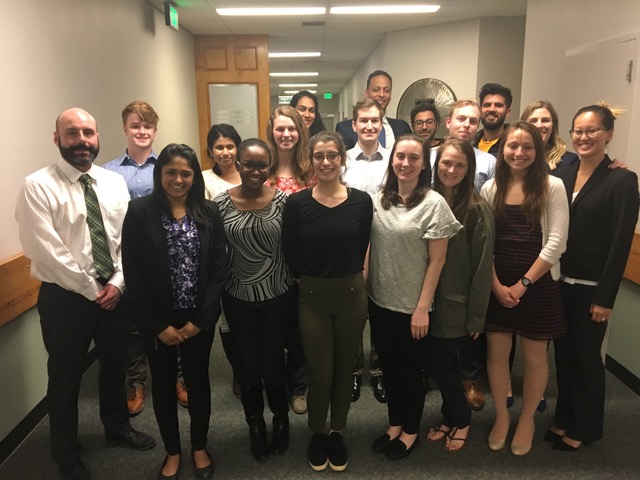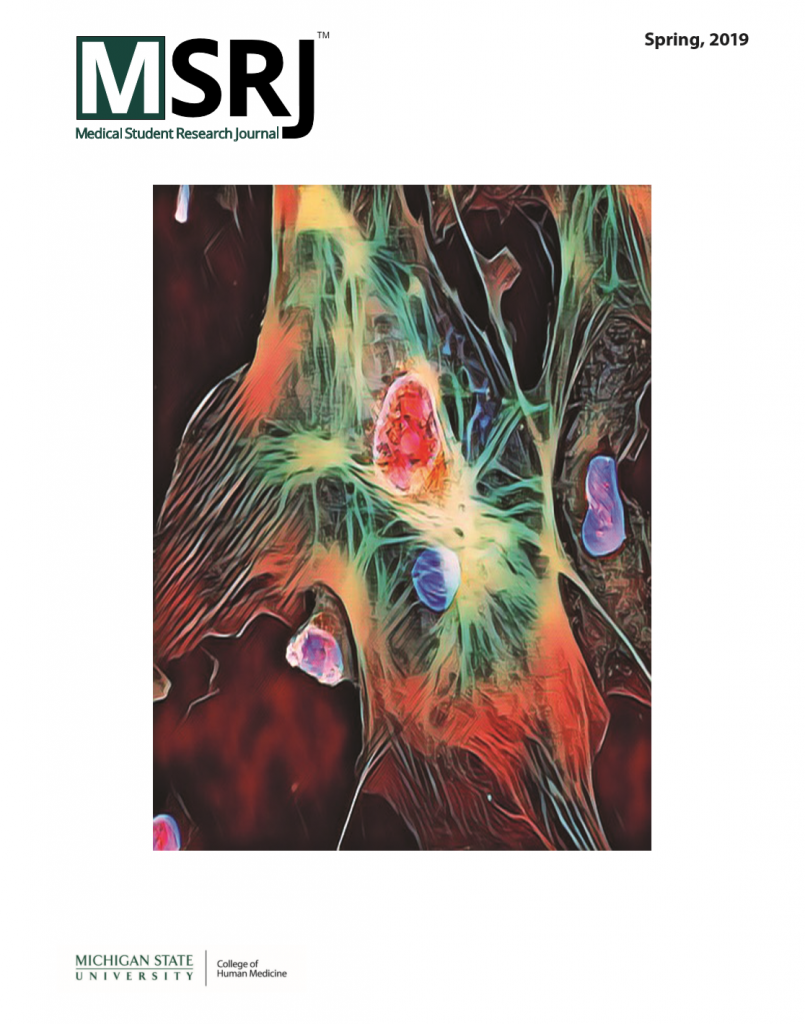MSRJ is proud to announce its 2019-2020 Executive Board members! Congratulations to Kathleen Louis-Gray, Eve Pourzan, Michael Dryden, Ninette Musili, Maria Rich, Antara Afrin, Christopher Dextras, and Jacob Purcell for being elected to their respective positions. They are working hard to publish evidence-based and peer-reviewed research submitted by medical students across the globe. We are excited to see how MSRJ will grow under their supervision!
Meet our staff:
Kathleen Louis-Gray – Executive Editor-In-Chief – is a 4th year medical student at MSU College of Human Medicine at the Traverse City Campus. She earned her Ph.D. in Neuroscience from Michigan State University, and studied thalamic synaptic plasticity in a rat model using electrophysiological techniques. She is currently in the Rural Community Health Program in Traverse City. There, she is involved in research regarding diet interventions and polysubstance use during pregnancy in a rural population. She has been an active member of MSRJ since 2016, helped to organize the MSRJ Elective, served as the M3 Executive Editor in the past. She is interested in neurology, and would like to strongly integrate clinical research with her future specialty.
Eve Pourzan – M4 Executive Editor – is a 3rd year medical student and is a prior 2017-2018 MSRJ Elective Organizer, and 2018-2019 Junior Editor Coordinator. She received her Bachelor’s in Politics from UCSC, and worked for the Michigan Legislature before pursuing medicine. Eve has lab experience investigating cell signaling in estrogen-positive breast cancer and systemic sclerosis. She is interested in pursuing anesthesiology.
Michael Dryden – M3 Executive Editor – is a 3rd year medical student at MSU College of Human Medicine heading to the Traverse City campus in the coming months. He grew up in Petoskey, Michigan before heading to the University of Michigan where he completed his B.S. in Neuroscience. He then attended Eastern Michigan University where he received his M.S. in Cell and Molecular Biology with a focus in Behavioral Neuroscience. While there he studied mouse olfactory behavior and olfactory bulb plasticity while developing new equipment and methodology. He is currently interested in both Emergency Medicine and Neurology, and when not studying or on the wards, you will most likely find him outdoors either riding his bikes or spending time on the water.
Ninette Musili – Senior Editor Coordinator – Ninette is a rising 3rd year medical student at Michigan State University College of Human Medicine. She grew up in Ann Arbor, Michigan and earned her B.S. in Biomolecular Science from the University of Michigan. She is currently interested in maternal health and child disparities.
Maria Rich – Junior Editor Coordinator – Maria is a 2nd year medical student at Michigan State University College of Human Medicine. She grew up in Grand Rapids, Michigan and received her B.A. in Biology from Kalamazoo College where she enjoyed studying abroad in Quito, Ecuador and playing varsity soccer. Prior to starting medical school, she worked as a Clinical Research Coordinator with the BeatCC Pediatric Oncology Research Team. At this point in her medical education, she is excited about pediatrics, genetics, and palliative care.
Antara Afrin – Secretary – Antara is a second year medical student at the Michigan State University College of Human Medicine, Grand Rapids campus. She grew up in Detroit, Michigan and received her B.S. in Biomolecular Science from the University of Michigan in Ann Arbor. During the summer prior to medical school, Antara worked with the research team of Dr. Mona Hanna-Attisha at the Pediatric Public Health Initiative to understand the effects of lead on development of children who were in utero at the height of the Flint Water Crisis. Antara’s current research interests are pediatrics, surgery, and neurodevelopmental disorders.
Christopher Dextras – Treasurer – Chris is a third year medical student at Michigan State University’s College of Human Medicine. He grew up in Frederick, Maryland and received a B.S. in cell biology and molecular genetics from the University of Maryland. Prior to medical school, he worked at the NIH doing preclinical drug discovery research. He is currently interested in internal medicine.
Jacob Purcell – Public Relations – Jacob is an M2 at the Grand Rapids campus. Originally from Tampa, Florida, Jacob played collegiate baseball and earned his B.S. from Montreat College with a major in Biology and minor in Chemistry. He moved back to Tampa for a gap year and earned a graduate certificate in Clinical Investigation from the University of South Florida. He worked as a clinical research assistant at Moffitt Cancer Center and Morton Plant Hospital in the department of radiation oncology researching breast cancer genetics and radiation therapy outcomes. He also serves on the executive board for the MSUCHM-GR Surgery Interest Group and oversees undergraduate outreach events. His personal research interests include surgery, sports medicine, physical medicine & rehabilitation, and genetics.

E-Board members (left to right) Eve Pourzan, Kathleen Louis-Gray, Ninette Musili, Christopher Dextras, and Michael Dryden.



